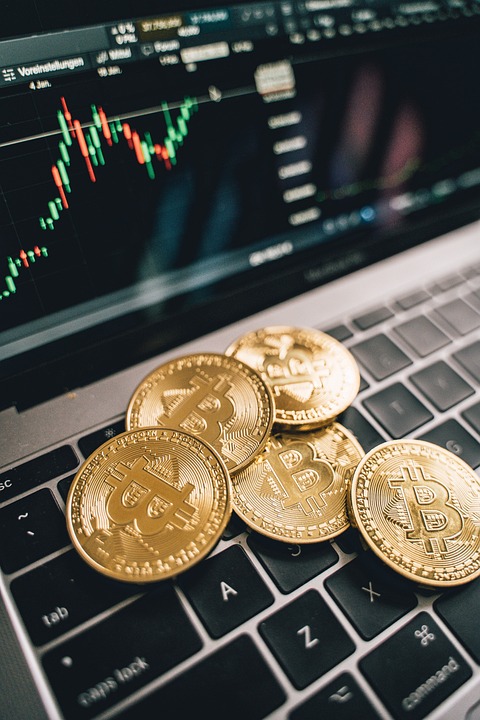Navigating the DeFi Landscape: What Investors Need to Know in 2023
Decentralized Finance (DeFi) has rapidly emerged as a cornerstone of the cryptocurrency ecosystem, reshaping how traditional financial systems operate. As we move deeper into 2023, the DeFi landscape continues to evolve, presenting both opportunities and challenges for investors. Understanding the intricacies of this evolving sector is crucial for anyone looking to navigate its turbulent waters successfully.
Understanding DeFi: A Brief Overview
DeFi refers to a subset of financial applications built on blockchain technology, primarily Ethereum, that aim to provide traditional financial services without the need for centralized intermediaries. Services such as lending, borrowing, trading, and yield farming are executed through smart contracts – self-executing contracts with the terms of the agreement directly written into code.
In 2023, DeFi has expanded to include a wider array of services and improved interoperability between different blockchain networks, enhancing user experiences and accessibility. However, while the potential for high returns exists, investors must remain vigilant due to inherent risks.
Key Trends Shaping the DeFi Landscape in 2023
-
Regulatory Scrutiny: As DeFi grows, so does the attention it receives from regulatory bodies. Governments worldwide are beginning to draft regulations aimed at mitigating risks associated with DeFi, such as fraud, money laundering, and consumer protection. Investors must stay informed about regulatory developments, as new frameworks could significantly affect how DeFi platforms operate.
-
Layer 2 Solutions: To address issues of scalability and high transaction fees on the Ethereum network, Layer 2 solutions like Optimistic Rollups and Zero-Knowledge Rollups are gaining traction. These technologies allow for faster and cheaper transactions, enhancing the user experience and supporting a broader range of applications. Investors should explore projects leveraging these technologies, as they offer promising scalability and efficiency.
-
Cross-Chain Interoperability: The DeFi universe is gradually transitioning towards cross-chain solutions that facilitate asset movement across different blockchains. Projects that enable seamless integration between blockchains will likely gain a competitive edge. Investors should keep an eye on platforms that support multi-chain operations, as they can provide additional flexibility and diversification opportunities.
-
Institutional Adoption: As institutional interest in cryptocurrency grows, so does the potential for DeFi platforms to attract larger capital inflows. More hedge funds, asset managers, and financial institutions are exploring DeFi for yield generation and diversified investment options. This trend could lead to increased liquidity and more sophisticated financial products within the DeFi ecosystem.
- Advanced Risk Management Protocols: As security remains a top concern in DeFi – given the prevalence of hacks and exploits – innovative risk management tools are emerging. Protocols that utilize insurance products, multi-sig wallets, and decentralized autonomous organizations (DAOs) to enhance security will become increasingly important. Investors should prioritize protocols with strong security measures in place.
Risks to Consider
Despite its promise, investing in DeFi carries significant risks:
- Smart Contract Vulnerabilities: Errors in coding can lead to exploitable vulnerabilities, resulting in substantial losses.
- Market Volatility: The prices of DeFi tokens can be highly volatile, influenced by market sentiment, regulatory news, and technological developments.
- Lack of Consumer Protections: Unlike traditional finance, DeFi operates largely without consumer protection measures, making it crucial for investors to conduct thorough due diligence before investing.
Strategies for Investors
-
Conduct Thorough Research: Investors must conduct detailed research on projects, including their technology, team, business model, and community engagement. Resources such as whitepapers, social media channels, and forums can provide valuable insights.
-
Diversify Investments: To mitigate risk, investors should consider diversifying their portfolios across multiple DeFi projects and protocols. This approach can help spread potential losses and maximize returns.
-
Stay Updated on Regulatory Changes: Understanding the regulatory landscape is essential. Investors should monitor news and updates related to DeFi regulations in their regions.
-
Use Reliable Tools: Leverage decentralized exchanges (DEXs) and portfolio management tools that offer insights into market trends, performance metrics, and risk assessments.
- Invest with Caution: Start with smaller investments in reputable projects and gradually build a portfolio as confidence and understanding deepen.
Conclusion
Navigating the DeFi landscape in 2023 requires a combination of research, vigilance, and strategic planning. While the potential for innovation and profit is immense, so are the risks. By understanding the key trends, remaining informed about regulatory issues, and employing savvy investment strategies, investors can position themselves to thrive in the burgeoning world of decentralized finance. As always, a prudent approach will ensure that one can capitalize on the opportunities that DeFi has to offer without succumbing to its pitfalls.





